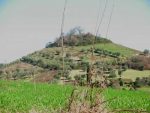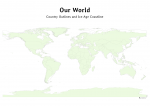This week our youngest students are looking at Aboriginal Places, while slightly older students are comparing Australia to other places around the world. Our older students are starting their class election segment of work, covering several parts of the Civics and Citizenship, as well as the History, curricula.
Foundation/Kindy/Prep to Year 3
![]() Students in Foundation/Kindy/Prep (Unit F.4), including those in combined classes with Year 1 students (Unit F-1.4) are focusing on caring for special places by looking at Aboriginal Places around Australia. Students consider their school as a special place, the local area as a place special to the local Aboriginal group, as well as other Aboriginal Places around the country. This section of work can be backed up using the Aboriginal places included in the Aunt Madge’s Suitcase Activity. Students in Years 1 (Unit 1.4), 2 (Unit 2.4) and 3 (Unit 3.4) are comparing Australia with places overseas. The places chosen for comparison can be the places from the stories chosen in week 1. Year 1 students compare the landscape, weather, animals and environment between Australia and the other countries and consider how the similarities and differences influence lifestyles. Students in Year 2 undertake similar comparisons, whilst focusing on issues of scale and the impact of degree of urbanisation. Students in year 3 consider how people in each place view their local environment and how different places might be experienced differently by different people.
Students in Foundation/Kindy/Prep (Unit F.4), including those in combined classes with Year 1 students (Unit F-1.4) are focusing on caring for special places by looking at Aboriginal Places around Australia. Students consider their school as a special place, the local area as a place special to the local Aboriginal group, as well as other Aboriginal Places around the country. This section of work can be backed up using the Aboriginal places included in the Aunt Madge’s Suitcase Activity. Students in Years 1 (Unit 1.4), 2 (Unit 2.4) and 3 (Unit 3.4) are comparing Australia with places overseas. The places chosen for comparison can be the places from the stories chosen in week 1. Year 1 students compare the landscape, weather, animals and environment between Australia and the other countries and consider how the similarities and differences influence lifestyles. Students in Year 2 undertake similar comparisons, whilst focusing on issues of scale and the impact of degree of urbanisation. Students in year 3 consider how people in each place view their local environment and how different places might be experienced differently by different people.
Years 3 to 6
 Students in Years 3 (Unit 3.8), 4 (Unit 4.4), 5 (Unit 5.4) and 6 (Unit 6.4) are starting a segment where they will conduct a Class Election. In this first lesson of the 4 lesson activity, students will be selected to campaign for particular issues. These issues should result in actual results for the class in the form of a ‘political promise’, such as a day without homework or a special class activity. It is recommended that the teachers allow students to suggest issues, which can then be negotiated with the teacher. Students will be chosen to lead campaigns on each issue. Students in Years 3, 4 and 5 also consider Environmental Issues, and create a poster highlighting an environmental issue. Students in Year 6 consider Political Issues and make a poster on one of these. Teachers and students will also use resources from the Australian Electoral Commission (AEC) during the course of this unit. Students also continue to monitor the growth of their plant, as their Scientific Investigation.
Students in Years 3 (Unit 3.8), 4 (Unit 4.4), 5 (Unit 5.4) and 6 (Unit 6.4) are starting a segment where they will conduct a Class Election. In this first lesson of the 4 lesson activity, students will be selected to campaign for particular issues. These issues should result in actual results for the class in the form of a ‘political promise’, such as a day without homework or a special class activity. It is recommended that the teachers allow students to suggest issues, which can then be negotiated with the teacher. Students will be chosen to lead campaigns on each issue. Students in Years 3, 4 and 5 also consider Environmental Issues, and create a poster highlighting an environmental issue. Students in Year 6 consider Political Issues and make a poster on one of these. Teachers and students will also use resources from the Australian Electoral Commission (AEC) during the course of this unit. Students also continue to monitor the growth of their plant, as their Scientific Investigation.



 Students in years 5 and 6 in particular enjoy the
Students in years 5 and 6 in particular enjoy the 
 Adding events to a timeline, or the class calendar, also good ways to practise core skills.
Adding events to a timeline, or the class calendar, also good ways to practise core skills.
Aunt Madge's Suitcase was a really fun activity! The children were really interested in all the places she travelled to,…
Indi Alford, Teacher